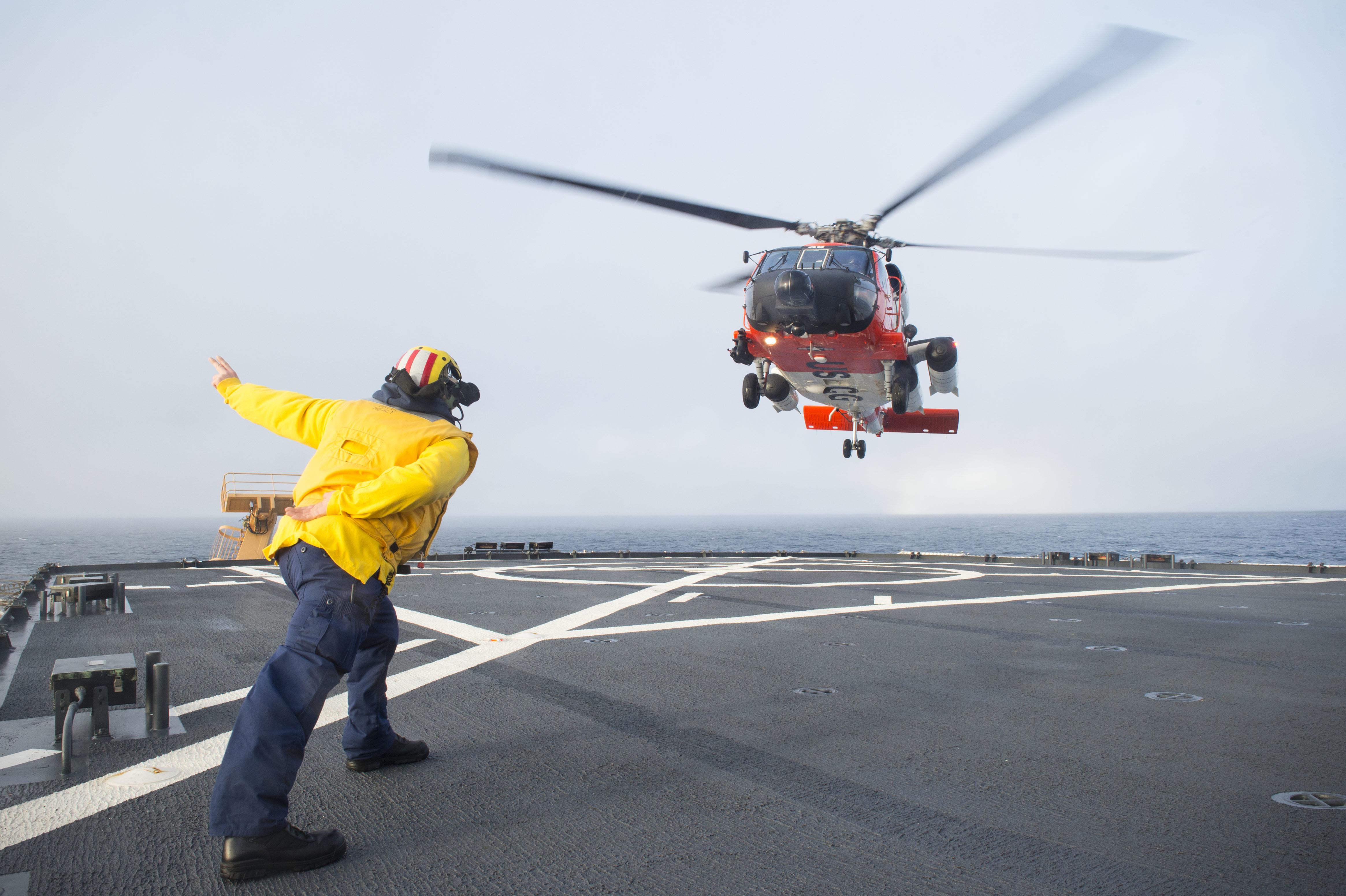The US Coast Guard’s new Arctic strategy highlights geopolitics and security
“The way the Arctic is defined in the new strategy is, cooperate where we can but compete where we must.”

The U.S. Coast Guard’s new Arctic Strategic Outlook, released on Monday, shows a shift in focus toward geopolitical and security concerns in the region.
The 46-page document focuses on the ways in which the Arctic is changing, from the environment and geopolitics to economics and shipping, and it details the Coast Guard’s planned response.
The report points also to changes since 2013, when the Coast Guard last released an Arctic strategy, including increased Chinese and Russian interest and activity in the region as well as a potential rise in resource extraction, tourism and fishing as the environment changes.
As the Arctic becomes more accessible, the Coast Guard anticipates a growing demand for its services in the region. While it’s unclear what exactly the consequences of a changing Arctic will be, the agency mentions the need to prepare for likely scenarios, including search and rescue (one of their biggest challenges, the report notes), law enforcement, management of crises like oil spills and marine pollution, and other missions.
But geopolitics and security underpin the report and the Coast Guard’s plans for the future. Other Arctic nations — and non-Arctic nations with interests in the region — have invested in infrastructure and capabilities, such as ice-capable vessels, improved communications and new or updated ports and airports, the agency points out.
“Over the past 15 years, the Nation’s strategic competitors have invested heavily in Arctic-capable assets, infrastructure, and relationships, some of which are targeted at eroding the influence of America and the rule of law,” the report reads. “U.S. investments over that same period of time have been comparatively modest.”
China and Russia make several appearances throughout the strategy document, while the Coast Guard’s support for science and research are mentioned only in passing.
“This administration has defined its national security strategy in terms of great power competition,” says Sherri Goodman, senior fellow at the Woodrow Wilson Center and former U.S. Deputy Under Secretary of Defense. “That’s where the focus on Russia and China comes from.”
The strategy shows the Coast Guard is thinking not only about “traditional” missions like search and rescue or oil spill response, she tells ArcticToday. “Now it’s also saying it’s going to support military services and be able to provide that presence.”
Previously, military agencies, policymakers and other observers have seen the Arctic as a zone of cooperation and peace, she says, but this document from the Coast Guard indicates that view is changing. “The way the Arctic is defined in the new strategy is, cooperate where we can but compete where we must,” Goodman says.
The Coast Guard’s strategy is still largely a preventative approach, Goodman says. The U.S. approach to prevention in the Arctic has long been to “project power and have presence where needed,” she adds. Prior to dramatic environmental change, that presence was primarily through submarines, space and aviation. “Now, with an open ocean, presence is going increasingly to mean presence at the surface,” Goodman says.
The agency proposes a three-pronged approach — what it calls “lines of effort” — in the Arctic: enhancing capabilities, including more heavy icebreakers, more reliable communications, and better maritime domain awareness; strengthening “rules-based” order through international organizations like the Arctic Council, the Arctic Coast Guard Forum, and the International Maritime Organization; and innovating and adapting to changes.
Partnerships are key to this strategy, according to the new strategy, which proposes better coordination with and among international, federal, state, and local agencies — from the Arctic Council to the Canadian government to tribal entities — with a particular focus on “interoperability” with the U.S. Department of Defense.
While the strategy steers clear of the words “climate change,” it does describe the environmental transformation underway in the region. Sea ice is a particular concern for the maritime agency — not just the loss of permanent and seasonal ice but also increasingly unpredictable ice formation, as in the Northwest Passage in 2018. But other changes are mentioned as well, including coastal and river erosion, changing subsistence food sources and more frequent and intense storms.
The physical changes in the Arctic are also leading to social changes among the communities of the North, the agency warns, with an uptick in illegal drug trafficking and “increased activity from industry, tourism, and research [that] will create complex challenges to community resilience and health.”
According to the document, this “crumbling physical and social infrastructure” will “translate to increased risk in the maritime domain.”